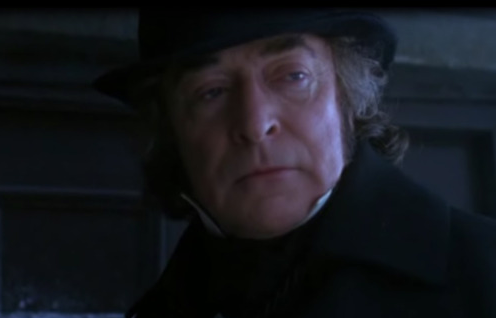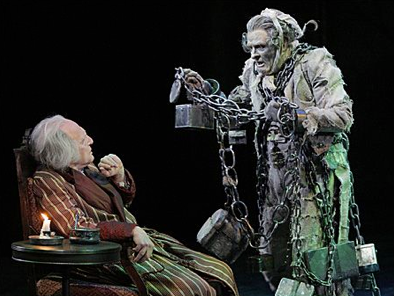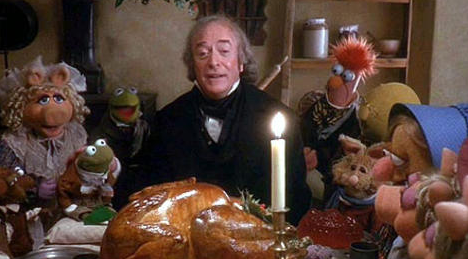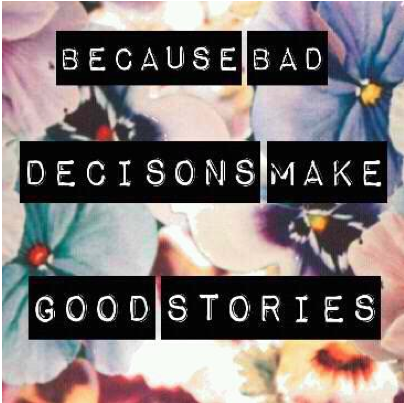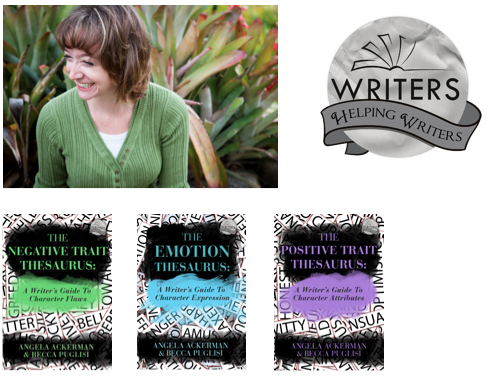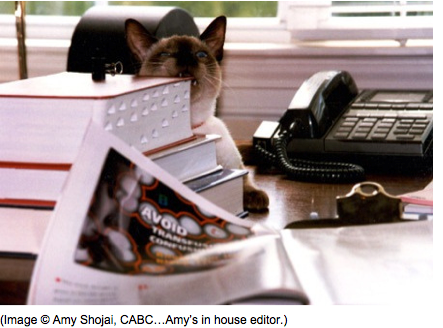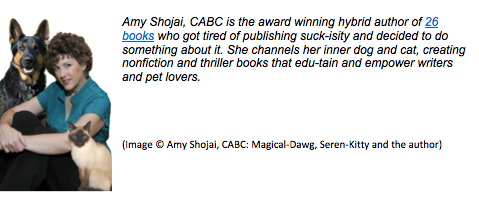Kristen Lamb's Blog, page 68
December 11, 2013
What Ebenezer Scrooge Can Teach Us About Great Writing
One of my all-time favorite movies for the holidays is The Muppets Christmas Carol. I believe I’ve seen this movie a few hundred times. I’ve worn out three VHS tapes and at least three DVDs. I play the movie over and over, mainly because, well, duh, MUPPETS! I drive my husband nuts playing this movie over and over…and over. I’m worse than a three-year-old.
But, Muppets aside, also I can’t get enough of the music. Also, I love the story of A Christmas Carol no matter how many times I see it, no matter how many renditions, and I am certainly not alone. Charles Dickens’ story of a redeemed miser is a staple for holiday celebrations around the world and across the generations.
This story is virtually synonymous with “Christmas,” but why is it such a powerful story? Why has it spoken so deeply to so many? Why is it a story that never grows old? Today, I want to talk about a couple of the elements that speak to me, because they rest at the heart of great writing.
A Little Background
A Christmas Carol is a beautiful story, but I find it’s true beauty when it’s explained in the Christian context that inspired it. My son was watching Bubble Guppies and they tried (dismally) to tell the same story inserting “holiday” so as not to offend anyone, I presume.
Yet, the story fell flat.
The PC had ruined the beauty of this tale and made it more of a lesson about embracing shallow commercialism once a year than a story of love’s power to redeem the irredeemable. Thus, this post will use scriptural and religious references to explain why I believe this story is so moving and timeless.
The Power of Names
Naming characters can be vital. Great writers use the power of parsimony. Each element should serve as many purposes as possible. A name is more than a name. It has the power to be a story within a story.
I recall the moment I was first introduced to what would become my favorite hymn, Come Thou Fount of Many Blessings. One verse stood out:
Here I raise my Ebenezer
Here by Thy great help I’ve come
And I hope, by Thy good pleasure
Safely to arrive at home.
Ebenezer? Raise an Ebenezer? I needed to know more. Ebenezer is actually אבן העזר, Even Ha’Ezer, which literally means stone of help or monument to God’s glory and is referenced in the book of Samuel.
Thus, when Dickens chose a name for his protagonist, he chose the perfect name for the redeemed sinner. What is a better testament to a God of grace, than the hardened heart melted by the power of love? The current climate of political correctness aside, A Christmas Carol is most definitively a Christian story and the theme is reminiscent of Proverbs 25:22:
If your enemy is hungry, give him bread to eat
and if he is thirsty give him water to drink
for you will heap burning coals on his head
and the Lord will reward you.
Very often this verse is misunderstood. “Yeah! BURN ‘EM! THAT’LL TEACH THEM TO MESS WITH ME! COALS! BURN BABY BUUUURN!” Yet, if one looks to the ancient Hebrew, the heaping burning coals is literally the holy fire of LOVE that melts the hardened heart so it can be remade (think of melting a weapon of war to remake it into a tool for healing or farming).
The path to redemption is love, for only love holds the power to redeem those who have committed grave wrongdoings. Only love can repair what’s been broken and “remake” it into something entirely new.
The Christian story is a story of love, of redemption, of second chances and not because one has earned it or deserved it. Scrooge is a dreadful man, yet as the story unfolds, not only does Scrooge’s heart begin to melt as he’s faced with the truth of who he is, but our hearts melt toward Scrooge as we travel through the past, present and future and see what has created such a embittered, cruel person. We empathize and start to have compassion and love the unlovely.
Scrooge has done nothing to earn redemption, but his redemption is precisely why we cheer at the end.
The spectral visits serve to show Scrooge the truth, which again is reminiscent of scripture; and then you will know the truth and it is the truth that will set you free (John 8:32). Scrooge cannot change what he cannot see and it is the three ghosts who come to reveal what he’s failed to see on his own.
Repentance is not the mumbled and counterfeit “Sorry.” Rather, it is finally seeing the truth of who we are and what wrong we’ve done. It’s a decision to make things right and turn away from wrong. By the end of the story, Ebenezer is truly repentant. He’s a changed person determined to share the love and grace that was freely given to him when he didn’t deserve it.
Again, what a wonderful testament to God’s love. What a lovely “Ebenezer.”
Jacob Marley is another symbolic name. Jacob Marley is the name of Scrooge’s old business partner, and it is he who intervenes to try and redeem his old friend before Ebenezer is sentenced to share Marley’s fate. The name “Jacob” actually means “thief and liar.” In the Bible, Jacob stole his brother Esau’s blessing, then manipulated, lied, stole and connived until it came back to bite him multiple times (Jacob later wrestled with an angel until he could be given a new name, Israel and he’d become the father of a great people). What better name to give someone sentenced to roam as a specter for eternity carrying the weight of his ill deeds than a name that literally means thief and liar?
The Power of Symbol
When the ghost of Jacob Marley visits Scrooge:
The chain he drew about his waist was clasped about his middle. It was long and wound about him like a tail; and it was made (for Scrooge observed it closely) of cash-boxes, keys, padlocks, ledgers, deeds, and heavy purses wrought in steel…
Why cash-boxes? Why deeds? Why purses? In life Jacob was a money-lender. He was ruthless in his dealings and never forgave a debt. Yet, Matthew 6:12 (part of The Lord’s prayer) reads: Forgive us our debts as we have also forgiven our debtors.
Jacob forged his chains in life. He refused to show mercy, compassion, or kindness. He was ruthless and legalistic, thus he has sealed his fate. God has promised to forgive us the same way we forgive others, which is why the scripture pleads for grace, compassion and mercy. Also, forgiveness of debts is the heart of what Christmas is about, for unto us a child is born.
Christians believe God sent His only begotten son (God in the form of Man) to pay a debt we cannot hope to pay. God loves us as His children, and our actions have left us hopelessly out off our depth, incapable of paying our debts. Yet Love cancels the debt. Christ’s last words on the cross, “It is finished” literally mean “Paid in FULL.” Jacob turned away from the grace freely offered, so now he wanders, burden by the debts he cannot pay.
Jacob now finds opportunity to warn Scrooge of the chains he is now forging with his actions (and inaction), chains that are longer and heavier than even his. The only way for Scrooge to free himself is to learn to value himself and his fellow human beings.
Smaller Truths Reveal Larger Truths
Dickens makes it a point to show us that Scrooge is a miser. Scrooge shows no mercy, has no warmth, shares none of his wealth…with anyone, including himself. Scrooge is a very wealthy man, yet he wears old clothes, lights no coals for warmth because coal costs money. His home is threadbare and his food measly and meager.
The full story of redemption is that Scrooge not only sees his fellow man differently—worthy of compassion, love and generosity—but in changing how he views his fellow man, his view of himself changes (and heals) as well. The three spirits not only heal Scrooge’s relationship with his Maker, but with himself and others. Scrooge, for the first time, becomes part of the human experience, no longer content to be “solitary as an oyster.”
Happy Ending
Scrooge deserves the death he’s shown by the Spirit of Christmas Future. He deserves to die alone with those “closest” casting lots for his garments. This is what he has sown with his lifetime of greed, hate and spite.
Yet, he is pardoned.
Scrooge is the resurrected heart, the dead brought to life. When God promises “everlasting life” it isn’t a promise that we get to float around on a cloud in Heaven after we die. Rather, it’s a promise that life begins at the moment we decide to accept mercy and love. Scrooge has been “alive” but not “living.” He was existing. When he is redeemed, given a new chance, he changes. Out of gratitude for the mercy he is given, he reaches out to give what he’s been given. LOVE, MERCY, GENEROSITY.
Restoration
Sure, God could have rained down a miracle that healed Tiny Tim and landed Bob Cratchit a better job with a better boss, but Dickens saw God as a God in the business of finding and changing the lost, miserable and broken. Instead of giving the miracle to Cratchit and his family, God, instead, gives it to Scrooge, the least deserving of a miracle.
Why?
Because God is about working through people. Many of His miracles come from ordinary people performing extraordinary acts of kindness and sacrifice. By changing Scrooge, God could create a man who would become a benefactor. Cratchit has now a kind and generous boss, the community now had a passionate philanthropist, and Tiny Tim lives and the family thrived because one man’s heart could be melted.
It is no great feat to love the lovely. If you love only those who love you, what reward is there for that? Even corrupt tax collectors do that much (Matthew 5:46). This story is so powerful namely because it shows that every human has value and is worth and an opportunity for redemption. God is in the business of changing hearts, and Dickens wanted to show that. A Christmas Carol is a masterful exploration of the true nature of Christianity, what it should be, what it was meant to be. Love. Above all.
What is your favorite version of A Christmas Carol? What do you love about this story? What is your favorite part? I love The Muppet’s Christmas Carol (already told y’all that), but THIS is my FAVORITE part!
Also, here is my favorite hymn, Come Thou Fount of Every Blessing. I cry every time I hear this:
I love hearing from you!
To prove it and show my love, for the month of December, everyone who leaves a comment I will put your name in a hat. If you comment and link back to my blog on your blog, you get your name in the hat twice. What do you win? The unvarnished truth from yours truly. I will pick a winner once a month and it will be a critique of the first 20 pages of your novel, or your query letter, or your synopsis (5 pages or less).
I hope you will check out my newest book Rise of the Machines–Human Authors in a Digital World onAmazon or even Barnes and Noble.


December 10, 2013
NaNoWhatNow? Three Tactics for Getting Un-Stuck

Image via Flickr Creative Commons, courtesy of Mike Renlund
One of the reasons I LOVE NaNoWriMo (National Novel Writing Month, which is November) is it gives new writers a glimpse of a professional pace. It teaches discipline, writing no matter what, how we feel or whether or not we’re inspired. Writing is a profession, not a playpen. I remember when I was new thinking that 500 words a day was such a BIG DEAL.
Now? I generally have 1200 words written before breakfast. My daily average can range from 1000-6000 words, depending on what I’m doing, how many projects I have going, etc.
I also love NaNoWriMo because it employs one of my favorite techniques, Fast Draft. Wear out the inner editor and the subconscious can come up with some pretty amazing stuff. This technique isn’t for everyone, but I do recommend trying a little of everything when we’re in the beginning stages of our career. Eventually, if we stick with it, we’ll find out what works. I LOVE Fast Draft because I’m, at heart, an editor.
I can nitpick until the prose screams and taps out.
Perfect prose is wonderful (though imaginary—-someone will always hate it). But, the world doesn’t reward perfection; it rewards finishers. So if you took the NaNo challenge (or even did a Fast Draft on your own) odds are you might find yourself stuck. It happens to us all.
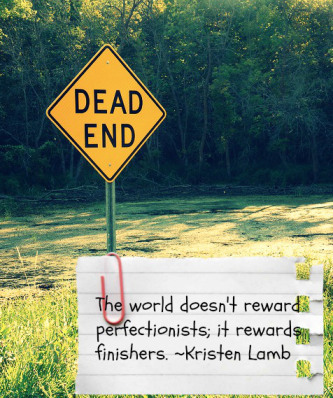
Image via Marie Loughin WANA Commons
I finally finished my mystery-thriller. I fast-drafted it and finished it in a month—70,000 words. I wrote it right after I fast-drafted my NF and newest best-selling book Rise of the Machines–Human Authors in a Digital World. NF is left-brain. Left-brain was tired and needed time to marinate over what I’d written. Right-brain was bored and coloring on the walls and eating Play-Doh. So, while left-brain was resting and contemplating its belly-button, I put right-brain to work.
This gave me time to subconsciously ponder the NF while plowing through the fiction. Change is great. Get out of the house and out of your head and many times roadblocks will melt away. Read other books, watch movies, read some NF to feed and refresh your subconscious. In time? You’ll see what magic it can create ;).
Then I had to travel all spring and summer and finish and publish ROM, so I set the fiction down. Then we had WANACon and then my world went KABLOOEY personally, but all of that was fine, because I was still working on the fiction, rolling it over in my mind. I’d written four different endings and they were “good” but not “good enough.” Something was missing.
Maybe you finished the 50,000 words. Odds are, you hit somewhere between 20,000-35-000 and were stuck like a Ford Fiesta in icy mud. This is one of the reasons I recommend at least getting the log-line and basic plot points before beginning any fast-draft. If we don’t, we might find it hard to locate our literary butt with a literary flashlight.
But, I’ve been stuck and here are some tips.
Take a Break
Too many people dive into revisions right away. Take at least two days. Two weeks is better. Two months? Might take that long. Write your blog posts for the next week or month. Let the fiction simmer for a while and often problems will become clearer. Sometimes we can’t see the forest for the trees. Get away. Start plotting/fast-drafting the next novel. The human mind is an amazing thing. It will still be working on the other book, so expect some weird dreams.
Take a Different Path
Find a place where your character/story hit a wall? Nothing is happening? Back up. Can the protagonist make a different decision? As writers, we must guard against sanity. Sanity is our enemy. Great fiction comes from dumb, bad, miscalculated choices. If our protagonist is so evolved that he/she always has the right answers? Never makes emotional decisions guided more by baggage than logic? SNOOZE FEST.
You might even find yourself resistant to a certain direction. Why? Because it’s the correct path. It’s the uncomfortable path.
Discomfort=Dramatic Tension
Readers crave resolution. All humans do. We don’t like unresolved problems. This is how we get readers to turn pages faster and put our next book on their wish-list (if we have a series).
In my novel that I finally finished yesterday, the protagonist’s greatest strength is also her greatest weakness. She sees the best in people and tends to ignore her gut when red flags go up. She has to grow. Why I didn’t like those four other endings was they all had an HEA (Happily Ever After). But, that didn’t work with this book as much as I tried. There was only ONE ending that would satisfy. It’s dark, heart-wrenching…but (hopefully) satisfying. It was the ONE ending I didn’t want to write, but it was the only ending that tied up all loose threads in the mystery and demonstrated true character arc.
Take a Different POV/Recast
I’ve won multiple awards for short fiction, but have struggled when it comes to writing a full-length novel (though I can plot and edit them all day for others). Why? Because I LIKE strong female characters. Ah, but the trick is how to make a woman strong, and not be viewed as a b!*&%. Originally, I wrote virtually the same story as the one I just finished, but in close third. Everyone LOVED my supporting characters…and hated my protagonist.
No matter how many times I rewrote it? People did not like my protagonist (which is a problem). What did I do? I changed POV. I switched out deep third for first-person and this infused more of my humor I naturally use in blogging. Also, instead of a female war vet, I chose a disgraced salesperson who’d been blackballed by her fiancé who’d stolen billions of dollars and left her as the FBI’s prime suspect.
She’s strong because she came from the trailer park and grew up in a family straight from The Jerry Springer Show…not because she was a soldier. She ran away to go to college, knowing it was her escape from The Cactus Flower Trailer Park…only to have to go home because she’s out of money and options. She has to face the demons of her past and new demons she never knew existed.
Suddenly? Beta readers were in love. Final version of The Devil’s Dance (working title) is 97,000 words (which is square in the ballpark for a mystery-thriller’s word count). Will cut some away, but overall? I am VERY happy with the story.
I can apparently write likable/believable male military characters, but the female? Yeah….
I had to redefine what a STRONG female was. Did she have to be a former MP when a Waffle House waitress who works the drunks at 2:00 a.m. might be more relatable and interesting?
Cool thing is, I now have an option. I can go back and rewrite the same book in close third and then see if just changing perspective removed the coldness readers were feeling in the first go-round. If not? Then maybe first-person is my thing. Try switching POVs and see if that doesn’t fix the problem.
Have you been stuck? Are you stuck? Any tips? Advice? War stories?
I love hearing from you!
To prove it and show my love, for the month of December, everyone who leaves a comment I will put your name in a hat. If you comment and link back to my blog on your blog, you get your name in the hat twice. What do you win? The unvarnished truth from yours truly. I will pick a winner once a month and it will be a critique of the first 20 pages of your novel, or your query letter, or your synopsis (5 pages or less).
I hope you will check out my newest book Rise of the Machines–Human Authors in a Digital World onAmazon or even Barnes and Noble.
Also, here is a list of WANA International classes and Christmas specials.


December 9, 2013
The Duality of Character Traits–Why We Need the Good, the Bad and Even the Ugly
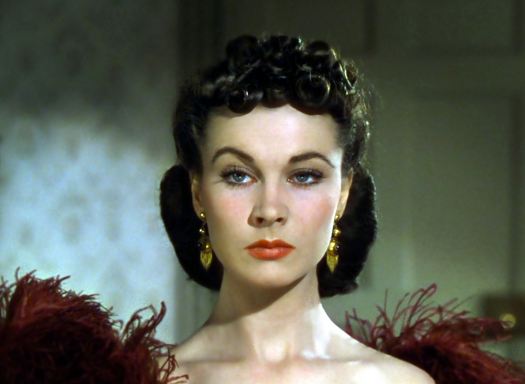
Oh, Scarlett
I’ve read thousands of works, and one quick way to have a “paper doll” is for a character to be all good or all evil. When we begin writing, it’s easy to fall into this trap. Our heroes or heroines are versions of ourselves (minus any imperfections, of course). Our bad guys are every ex or person in high school who picked on us. They are evil personified. But then we soon realize?
Our characters are deep as a puddle, making them dull as dirt.
If we look to some of the most fascinating characters in history, books, and movies, we see a cast that includes Riddick (Chronicles of Riddick), Gordon Gekko (Wall Street), Wyatt Earp (history and the movie Tombstone), Tom Sawyer (literature), Annie Wilkes (Misery), Hannibal of Carthage, Hannibal the Cannibal (Silence of the Lambs), Batman, Iron Man, Poison Ivy, Detective Jane Rizzoli and Dr. Maura Isles (from Tess Gerritson’s series of novels and also television), Lestat (Interview with a Vampire), Molly Brown (from history and the movie The Unsinkable Molly Brown)….
and yes, then there is Scarlett…
Today to talk to you about how to create multi-dimensional characters that resonate with readers is WANA International Instructor, Becca Puglisi…
Take it away, Becca!
I was watching Gone with the Wind the other night—because, you know, it was on TV and I had four hours to kill. As a teen, this was the first “grown-up” book I read, and ever since, I’ve had a serious girl-crush on Scarlett O’Hara. Which makes no sense, considering what a horrible person she is. I mean, she spends most of the story scheming to steal her only friend’s husband. When that doesn’t pan out, she marries her sister’s fiancé to get his money.
She’s spoiled, materialistic, manipulative, and utterly self-involved. And yet, I love her as a character. If she wasn’t widely admired, I’d think there was something seriously wrong with me. But even after all these years, she continues to connect with people. Why is this?

Because the Scarletts of the world get THINGS DONE….
For me, part of the reason lies in the duality of her flaws. As a spoiled brat, she embraces boldness to get what she wants. To pursue materialism, she needs to be resourceful. Cleverness goes hand-in-hand with her manipulative nature, and to obtain her selfish goals, she must be persistent.
Scarlett’s flaws aren’t one-dimensional. They have many facets—both positive and negative. This is how real people are. Our flaws, while limiting us and hurting our relationships, have beneficial features, too. Likewise, our positive attributes have associated negative elements.
I’ve come to understand that while most traits fit neatly into either the flaw or positive attribute category, many of them contain both good and bad sides. I recognize this in the traits that define me and the qualities I see in others.
The same should be true of our characters.
Utilizing both sides of a given trait will add realism to a character’s personality and increase your chances of him connecting with readers. Here are a few tips on how to tap into both sides of your character’s traits in the writing process:
Identify Your Character’s DEFINING Traits
This should go without saying, but it’s vital to understand your character’s biggest flaws and attributes. Make a list of which traits he embodies. Then, narrow it down to one primary flaw and one primary attribute. This will keep things clear for you, which will then ensure clarity for the reader.
For help figuring out which traits make sense for your character based on his history, you might find this Reverse Backstory Tool useful.
Explore Defining Traits from EVERY Angle
Once you’ve identified a primary flaw and attribute, brainstorm the behaviors and attitudes—positive and negative—that might manifest in a person who exhibits those traits. For example, if your character is controlling, his list might look something like this:
• micromanages others
• exhibits a lack of trust
• pulls people away from loved ones to increase his control
• manipulates others
• is good at reading people
• is passionate
• shows incredible persistence
Show BOTH Sides
Your list should contain some positive and negative elements for each trait. Utilize the good and the bad to give your character depth. Perhaps his knack for reading people can benefit him in other ways, such as making him a successful cop or judge.
Maybe his passionate nature drives him to give of his time or money to a neighborhood charity. Show both sides of your character’s nature, and you’ll create a hero or villain that smacks of authenticity.
Building realistic characters is a crucial part of writing a successful story. Know your character’s defining traits and tap into the good and the bad that comes with them, and you’ll be on your way to creating multi-dimensional characters that will resonate with readers.
***
Thanks, Becca! Who are some of your favorite characters in history, books or even movies? Why? Were they flawed? How? How did that flaw just make you adore them even more?
I love hearing from you!
To prove it and show my love, for the month of December, everyone who leaves a comment I will put your name in a hat. If you comment and link back to my blog on your blog, you get your name in the hat twice. What do you win? The unvarnished truth from yours truly. I will pick a winner once a month and it will be a critique of the first 20 pages of your novel, or your query letter, or your synopsis (5 pages or less).
Comments for guests get DOUBLE POINTS.
Also, check out our upcoming WANA International classes HERE and our specials HERE.
BIO:
Becca Puglisi is the co-creator of The Bookshelf Muse, an award winning online resource for writers. She has also authored a number of nonfiction resource books for writers, including The Emotion Thesaurus: A Writer’s Guide to Character Emotion; The Positive Trait Thesaurus: A Writer’s Guide to Character Attributes; and The Negative Trait Thesaurus: A Writer’s Guide to Character Flaws. A member of SCBWI, she leads workshops at regional conferences, teaches webinars through WANA International, and can be found online at her Writers Helping Writers website.


December 6, 2013
Expectation & Desire—Cultivating Fans, Not Just “Readers”

Image via WANA Commons @ Flickr, courtesy of the talented and generous photographer Frank Selmo
We talked about this earlier in the week, but when I first approached agents with the idea of a social media book for authors, I was nearly stoned. All readers want is a good book, was their cry. Yes, that was true before our world inalterably shifted with The Digital Age.
In 1993, we didn’t expect an instant reply to a phone call. In 1996, we knew to just go make a cup of coffee while we waited for our dial-up Internet to load a page, because we didn’t expect for a page to appear in a fraction of a second.
In 1999, we didn’t expect our cell phones (the few who owned them) to take brilliant pictures, play music and offer us high-speed access to the Internet so we could make reservations for dinner, buy movie tickets, or do some Christmas shopping while stranded at the doctor’s office.
These days? How quickly would you change Internet providers if you could only open one screen and it took 3-5 minutes to load?
The Difference Between Expectation and Desire
Readers expect a good book. They expect proper grammar, punctuation and formatting that doesn’t look like it was performed by a sloth with a severe Valium addiction. These are basic, fundamental expectations…and they no longer impress people all that much.
Give you an example. I took my niece to a very expensive fine-dining establishment for her graduation. I saved the money to give her a treat. I’d chosen this restaurant because it was the one place Hubby and I would go to celebrate big events, like our wedding anniversaries.
Why?
Because, the first time we went there, we were greeted as if we were the most important people in the world. Instead of working middle class, we were A-Listers. A hostess guided us to a candle-lit table scattered with fresh rose petals and an artful bouquet of flowers. There was a card telling us Happy Anniversary and it was signed by all the staff who told us how grateful they were we’d chosen their establishment.
I am not a fan of seafood, but decided to give it a try. Everything they served had been swimming in an ocean 24 hours earlier and was fast-tracked to Central Texas. I never knew fish could actually taste soooo good, namely because all I’d ever been served was frozen mush that tasted like a freezer.
The waiter tended our every need. When I mentioned I had food allergies, the head chef came out to the table and worked out a special dish just for me. At the end of our meal? The staff arrived with free desserts for both of us. The chef had personally crafted one for me to accommodate all my allergies.

Now THAT is what I’m talkin’ about….
*swoons*
Every time after, the staff of this restaurant treated us as if we were the most special people on the planet. I was a DIE-HARD FAN and we rarely eat out. When we did? This was the only choice, the ONLY place I wanted to eat. And we had to plan, not only because the place was pricey, but it was tough to get reservations if one didn’t do it far in advance.
Fast-Forward
It’s May of 2013 and I call for reservations at my all-time-favorite restaurant to celebrate my niece’s graduation (she’d won a scholarship to study abroad for the summer). I told the reservationist how important this event was. My niece has grown up in a family where Golden Corral was about as fancy as dining ever got. I wanted it to be perfect. I spent days telling my niece how amazing this place was.
We arrive and the first thing the hostess says is, “Where do you want to sit?” and points to an empty dining room. No table. Nothing prepared. Every time I asked anyone a question, the answer was, “I don’t know. I haven’t worked here that long.” The table is set with chipped bread dishes and dirty glasses. I call over one of the staff and hand her my bread plate and say, “You guys might want to throw this away.”
“Why?” *blank stare*
“Because there is a chip and I don’t want food poisoning.”
“Oh.”
When the waiter arrives, I explain in detail about my food allergies and order a dish that is simple. All they have to do is leave off the butter sauce. I tell my niece to order whatever she wants, it’s her special day. She orders the lobster, which was $90. Our food arrives and guess whose food is swimming in butter?
We had to sit and wait twenty minutes while the food was remade. No visit from the chef. No apologies from the manager.
In short, I was fuming by the end of the night (and mortified). $220 for a meal, and the service would have been better at Mexican Inn for $30.
See, when we first went to this restaurant, we expected clean glasses, plates that weren’t chipped, servers who could answer simple questions (or make an effort to find the answer), who could take basic instructions. We expected excellent food. That alone? We would have been happy. But the original restaurant gave us more than expectations, they gave us our DESIRES.
Meet expectations? We create customers. Meet DESIRES? We create a cult following.
We desired to feel special. We desired above and beyond…and they gave us what we desired. THAT was what made me willing to save for two months to go to THAT dining establishment.
How Does This Apply to Books?
Readers expect good stories, just like we expected clean glasses. But what do our readers desire? The same thing we desired at the restaurant—to feel special, to connect, to have someone focus on us for a change.
This is why social media is such a game-changer. When we blog, we serve others. We have books to write. We don’t have to blog, but we’re going the extra mile to inform, connect, engage and entertain. Readers are expecting to be spammed by authors, yet they desire to know them and connect with them.
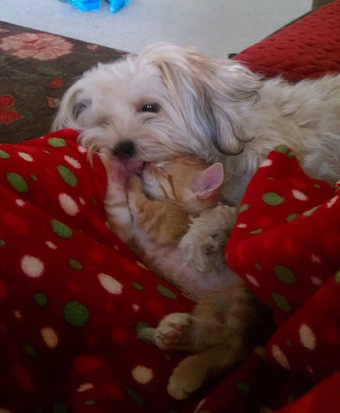
All you need is love….
The writer who automates pre-programmed tweets and never talks to anyone, is like that restaurant who thought they could keep business by simply having a fancy menu and doing the bare minimum (and not all that well). I would venture to say the empty dining room should have been my first warning to RUN!
When we give others (readers or potential readers) what they desire, this is when we differentiate. There are scads of other social media experts who have books. Go to their Twitter and it takes a half a second to realize it is all pre-programmed, self-serving fluff. This is why if you see me on Facebook, Twitter or anywhere else on social media? It is ME.
I don’t want to eat spam, so why would others? Yet, by looking inside, I know what I desire—meaning, connection, fun, engagement, recognition, and to feel someone cares. That is what I desire and I’m not any different than most of you or even the people who might buy my books (or even yours).
By serving people more than what they expect and, instead, seeking to give them what they desire, THAT is how die-hard, lifelong fans are made. A good book is what people expect, but search inside and ask, “What do readers desire? And what ways can I give that to them?”
I love hearing from you!
To prove it and show my love, for the month of December, everyone who leaves a comment I will put your name in a hat. If you comment and link back to my blog on your blog, you get your name in the hat twice. What do you win? The unvarnished truth from yours truly. I will pick a winner once a month and it will be a critique of the first 20 pages of your novel, or your query letter, or your synopsis (5 pages or less).
I hope you will check out my newest book Rise of the Machines–Human Authors in a Digital World on Amazon or even Barnes and Noble.
Also, here is a list of WANA International classes and Christmas specials.


December 5, 2013
Killing Time is a Crime–Embracing Speed by Redefining Life, Play & Work

Image via Flikr Creative Commons, courtesy of Yosi Lazarof
I do a ton of reading and research for all my books and blogs. Recently, I discovered a GEM of a book that I highly recommend; The Age of Speed—Learning to Thrive in a More-Faster-Now World by Vince Poscente.We all feel overwhelmed. It seems the more time-saving devices we have, the more that’s expected of us. We dash between e-mail, text, social media, housework, work, writing, family and feel like we’re drowning.
The WANA Way has always striven to be unique, unlike any other social media/business approach. Our focus is quality, not quantity, community, not “customers.” I recognized early that if writers (or businesses) weren’t having fun on social media or with work? They either wouldn’t do it or would do it poorly.
Time Redefined
In my newest book, Rise of the Machines—Human Authors in a Digital World, I go to great lengths to explain how changes in civilization not only alter the biological structure of the brain, but they also shift our values. Any significant advance transforms how we order space and time and what we find important. As society evolves, we must also evolve or we’ll be left behind (or our heads will metaphorically explode).
For instance, if we could access a time machine and go back to the year 600 A.C.E., we wouldn’t be able to communicate the same way with fellow humans. The clock wouldn’t be invented for a few more hundred years and we “time travelers” would experience lives governed by seasons and the sun (not a wristwatch).
Time had not yet been sliced, diced and parceled out. Thus, if we said, “Meet you in an hour” or “See you at 1:30″ we’d likely get a blank stare…then be burned as witches.
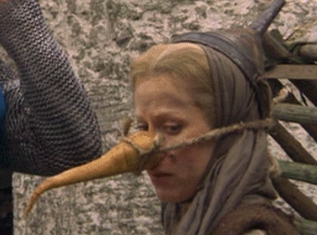
I just said, “Meet me for coffee at 9:00 a.m.”
Changes in the Life-Time Pie
Poscente brought up a remarkable point I hadn’t consciously seen. How we order time has been changed with technology. When we shifted from an agricultural society to an industrial society, humans began to define work in spacial terms. Work was a place we went. Home was the place we relaxed. The garage was the place for chores and the TV room was the place to chillax.
This was all well and good before the advent of the Internet, cell phones, texting, social media, and e-mail. Now we feel guilty when we text an I love you to a spouse or partner at work or when we answer a business e-mail or check Facebook at the park with family. It’s like life just got thrown in a Vita-Mix and whiiiiirrrrrrrrrr……
As Poscente says, “The framework that gave us discipline over our time and kept work in a neat little box has been rendered obsolete.”
This is one of the biggest reasons many author social media campaigns fail. Many well-meaning marketers advise writers to keep public life (authorly stuff) and personal life (fun/human stuff) in two separate spaces—a work space (fan page) and a personal space (profile page). They recommend multiple Twitter accounts—one all author and one as a human.
Then what happens is this…
The fan page grows at glacial speed and the author gets discouraged and, even if she pays to promote? The ROI (Return on Investment) is dismal. Then, discouraged, the writer grudgingly posts (rarely) because the fan page is no fun when only spam bots and digital crickets are there for company.
Depressed writer then defaults to spending more time on the profile page because it’s fun, active and dynamic…and subsequently feels guilty and levels the Christmas fudge like a biblical plague. Why?
Because she feels she is goofing off and not “working.”
Same with Twitter. The “Author Identity” gets ignored or reported for spam, while the “Personal Identity” is having a blast just chatting with others.
***This applies to most social media, btw.
Work and Fun Play Well Together
We can take a lesson from the corporate world. If we study the businesses that have thrived the most in recent years—Pixar, Google, Patagonia, The Boston Beer Company, Think Geek, NING, Best Buy (you can check some of these companies out HERE)—we see they are doing well because they’ve released the serfs employees and given them loads of freedoms.
There are businesses who haven’t caught up to the changes in our culture. Cell phones are turned in at the door, outside Internet use is prohibited and even punished. Computer keystrokes are measured and outgoing and incoming calls are monitored. Why? Because these businesses value metrics more than people. Employees are reprimanded for taking sick days or vacation (even when allotted), because any time away from “work” adversely impacts The Almighty Metric.
My husband used to work in the defense industry. When he took three days off because we were having a baby, he returned only to be written up (even though he had two weeks of sick time and had never used any of it).
O_o
Companies that are stingy with lunch breaks, benefits, and fun are missing out by not understanding the new way we parse time (and how it can benefit their business). Google encourages play, new ideas, engaging with family, and rewards innovative ideas. They appreciate that time has blurred and if we don’t blend work and fun and leisure?
We suffer.
When we try to keep work, play and home in neat, separate compartments? We waste time. Yet, when we merge these areas, we become more aerodynamic and can harness speed because we are zooming along like a kid riding a bike down a steep hill. Faster doesn’t have to mean harder if we embrace a new way of thinking.

Image via Google.com
WANA has been founded on the principle of being HUMAN above all else. Engage and connect authentically, and the sales will eventually follow. WANA never has to pay to promote our fan page because we talk about stuff other than writing. We aren’t the Try to Sell Stuff All the Time Channel.
Do we have stuff for sale? Sure! But we also post funny memes, start silly conversations, and share kitten pics :P.
If people wanted only to shop, they’d be on the Shopping Network not a social network.
The failure to appreciate how our ideas of work-leisure-home-time-ratio have changed is one of the main reasons why building an author platform feels like SO MUCH WORK to so many authors. If we are trying to part out work and fun? We just feel chopped in half, and last I checked? Being chopped in half was the definition of “un-fun.”
Learning to BLEND
I don’t multi-task. Multi-tasking is stupid and inefficient. I DO, however blend. I can talk to a writer friend on my cell phone about a plot problem while folding towels. One activity needs attention and the other I can do on auto-pilot. I talk to my mom while I dust. I listen to an audio book while on a Stair Climber. When I’m writing, I’m writing, but then I reward myself with a quick Facebook or Twitter break…then back to writing.
This keeps me passionate about work because it is filled with play and meaning. I’m streamlined.
In short, never kill time. Time is the only non-renewable resource. Use it wisely and learn to blend. Carry a book and, when stranded at the bank or the doctor’s office? Relax. Read a good book or my blog ;). If we embrace the notion that strict spaces no longer work? We are free to have fun and pair work and play, making life far more rewarding and speed shifts from enemy to ally.
Do you feel guilty having fun? Are you struggling to stay focused on writing because all these beeping devices are driving you nutso? Did you know you were allowed to be human and have fun on your fan page (and actually, if you do that, you won’t have to pay to promote)? Are there activities you blend and it helps keep you supercharged and balanced?
I love hearing from you!
To prove it and show my love, for the month of December, everyone who leaves a comment I will put your name in a hat. If you comment and link back to my blog on your blog, you get your name in the hat twice. What do you win? The unvarnished truth from yours truly. I will pick a winner once a month and it will be a critique of the first 20 pages of your novel, or your query letter, or your synopsis (5 pages or less).
And, if you get a chance, please check out my newest book Rise of the Machines–Human Authors in a Digital World.


December 4, 2013
Rejection, Reinvention & Do-Overs—What YOU Need to Know About E-Books
Waaayyyy back in the Dark Ages of Publishing, I queried many, many…*sigh* many agents, only to be rejected. Then, I pitched a social media book for writers…and they laughed in my face. Social media is a fad. Authors only need a good book. Yup. Well, these are the same folks who are now requiring an author to have a strong social media platform and most won’t so much as look at a book if they can’t google an author’s name and have it show up (and show something vibrant and interesting).
Had it not been for the indie/e-book revolution, my first #1 best-selling book We Are Not Alone–The Writer’s Guide to Social Media, and my second #1 best-selling book Are You There, Blog? It’s Me, Writer, and now my new best-selling book Rise of the Machines–Human Authors in a Digital World would never have existed (let alone dominated the top three slots in multiple categories).
Thank you WANA and INDIE PUBLISHERS! *shout-out to Bob Mayer, Jen Talty & Cool Gus Publishing who took a chance on my first two books*
Aside from me (being a niche author), there were many traditionally authors who had extensive backlists (full of mega-successful books) who would have never made another dime off that work (and a lot are now making six and seven figures). There were also many authors who’d been rejected for years, who finally forged their own paths using e-books. Look up Romance Author Theresa Ragan. Theresa sold SO many books, that when NY came calling? She turned them down.
I wonder if she sent them a rejection letter with “does not fit my needs”? Hmmm, perhaps I should ask next time I see her :D.
There are also authors like John Locke who used e-book success to garner sweet publishing deals. Why am I mentioning this stuff? Because no matter what kind of author we are—traditional, indie, self-published? E-books are important.
Yes, even if we traditionally publish. Right now NY can produce a book (maybe two) in a year. That’s a lifetime in the Digital World. What better way to keep fans excited than by publishing backstory, short stories, deleted scenes, stories involving supporting characters? This helps keep readers passionate so when your book is on the shelves? They are SO THERE.
Today, to talk about e-books and her own experience is Award-Winning Author (of TWENTY-SIX books) Amy Shojai…who happens to be a WANA International Instructor because I only want the best for you guys.
Take it away, Amy!
***
A few years ago, I had a high-profile agent, a spokesperson gig with a major pet products company, and a dozen award winning pet books published by “Noo Yawk” publishers. Oh, I worked my furry tail off for years to get there, but thought I’d finally arrived.
Before y’all decide to use my face on your personal dart board, you should know this: publishing went KER-FLOOEY!
I ended up back at square one. My agent couldn’t get a bite on any of my proposals. The spokesperson gig cancelled. My books got remaindered instead of renewed. All those backlist books, my retirement income (sob!), instead became dust bunny habitat under the bed.
Betcha you heard the booming echo of head-banging frustration where you lived. And you know what? “Noo Yawk” didn’t care. Tried a new agent and that didn’t work either. So I quit writing. I even took a real job . . .for about six months until I realized it doesn’t matter that “Noo Yawk” doesn’t care.
It only matters that I CARE.
Nobody cares more about YOU and your goals than YOU. So ya gotta be nice to you, treat you like royalty, and find ways to say “yes I can” instead of wallowing in “why I can’t.”
WHO ARE YOU, ANYWAY?
I am a writer. It’s not what I do, it’s who I am. But the “old Amy” no longer worked in the new world. Without an agent, I had nobody telling me “don’t bother, it won’t sell.” Without an editorial deadline, I had time to revise and update the latest, greatest information. And without that high-profile on-the-road gig, I could experiment with projects without concern it might hiss-off a sponsor.
So I reinvented myself first by kindle-izing my backlist books. That led to partnering with Jen Talty and Bob Mayer’s COOL GUS Publishing, creating my BLING, BITCHES & BLOOD blog (thank you Kristen!), voicing my own audio books, writing original titles and most recently a critically acclaimed dog-viewpoint THRILLERS WITH BITE series.
All because publishing went KER-FLOOEY. That’s a techie term. You have my permission to use it (I’m a writer, so I can make schtuff up).
BEYOND NaNoWriMo: KNOW YOUR OPTIONS
So, what does this have to do with you? Today there are fewer eyebrows raised toward hybrid/indie/self-pub authors than when I jumped off the digital cliff. The flood gates have opened.
Did you complete NaNoWriMo? Are you lined up at the starting gate, ready to pull the trigger on a spanking-new baby book?
Whether you plan to DIY Ebook, hire POD done, or choose a la carte services for cover design, publishing and more, LEARN FROM MY MISTAKES. Discover the options and make educated choices.
Because do-overs sucketh big time. This is why I am offering my:
EBOOK FOR WRITERS WEBINAR Dec. 7, 2-3:30 NY Time
Next Saturday, December 7, 2013, join my EBOOKS FOR WRITERS Webinar from 2-3:30 NY time for all the must-know options for publishing in today’s digital age. It’s only $40 (but you’ll get $10 off with the code GO INDIE). Register here.
No hotel, no travel, no makeup required! I love Webinars because I can wear jammies and have your cat or dog on my lap. The recording makes it possible to revisit the session later—especially helpful for those with a time conflict who live in, say, Australia. Or the wilds of Manhattan. And, if you aren’t yet ready to pull the trigger on your book, the session helps you figure out next steps when you ARE ready.
(Hint: Might be a cool early holiday gift for a writer in your life.)
The live Power Point presentation includes lots of SQUEEE! cute animal picture illustrations, answers your questions and gives you a life-preserver to keep you afloat as you dive off the self-publishing cliff. You will learn:
• Pros & Cons of Ebook Publishing compared to “Traditional”
• Options Available from DIY platforms to for-hire services
• Kinds of costs involved
• What you can (and should) do yourself
• What you should hire professionals to do
• Resources for helpful self-publishing software, editorial assistance and cover design help
• Practical step-by-step how-to “Kindle-ize” your manuscript
• Formatting tips for illustrations, covers, sidebars and table of contents
• Promotional must-knows including DO’s and DON’TS!
• Includes valuable links to further information, available as a down-load/handout.
I got to reinvent myself with help of others like Kristen Lamb who mentored me into creating a kick-ass BLING, BITCHES & BLOOD BLOG, so turn-about is fair play. Besides, it’s just the right thing to do. That’s one reason I jumped at the chance to guest here at Kristen’s amazing blog site. Good karma gets returned so find ways to pay-it-forward, let others know about the seminar (and discount code GO INDIE). You can thank me later ;).


December 3, 2013
What Makes You So Special? The Magic to Selling Books

Original Image via Flickr Creative Commons, courtesy of Anurag Agnihotri
I’ve worked both sides of the business fence—the creative and the corporate (and continue to do so). The strange things is that all industries are facing the same challenges as our world gets smaller, more integrated, and increasingly populated with competition. All types of businesses, whether we are selling tacos, signs, t-shirts, cardboard, technology or books must answer the same questions or face extinction:
Why YOU?
Why not someone else?
What do you offer ME?
What makes you so special?
WHO ARE YOU and why do I (the consumer) care?
A Lesson from SEARS

Image via Flickr Creative Commons, courtesy of Keith Nerdin…
For generations, Sears was a corporate juggernaut. Sears promised quality products at an affordable price. Then, Kmart came on the scene. So, Sears decided to get a bit fancier and more like a higher end department stores like Macy’s in reaction to increasing competition.
Yet, herein grew the confusion. Those who viewed Sears as a place for discount goods simply shopped at Kmart. Those who viewed Sears as a department store just went to Macy’s.
Sears had inadvertently muddled it’s brand. The company lacked focus, and, without focus, they lost domination over their market and have yet to reclaim it.
Why?
They couldn’t answer the above questions.
Why Sears and NOT Kmart or Macy’s? What did Sears offer the others didn’t? Why their products/stores? What makes me (the consumer) care?
There are only three core successful strategies whenever selling books (or even tacos or video games for that matter). Yes, THREE. Hey, I dig simple. Though, I will offer a caveat: There is overlap between corporate business and publishing (writing/selling books), but they’re hardly the same creatures. Yet, the smart writer understands that making a living doing what we love involves good business sense. Why not harness the great ideas both worlds can share?
Cost/Quality

Image via Flickr Creative Commons, courtesy of Mike V…
Okay, some of you might think I am cheating a bit here and putting two in the same category. Yet, I will say that there are many successful authors (indie and self-published) who aren’t writing The Great American Novel, but they turn out a lot of books people enjoy reading. Brain candy.
Sometimes people just want a burger, and they consume Big Macs with a lot more regularity than foie gras. These (burger) authors will never win a Pulitzer, but they frequently do very well because they tell good stories and a lot of them. Thus, offering e-books for $1.99 or $2.99 or $3.99 (for the trilogy) is a sound business strategy. Because when one has fifteen, twenty or more titles to sell (I.e. John Locke)? Those numbers add up exponentially.
If we spend more time on quality, then cost is less of a factor (though don’t get crazy). No one would respect a fine-dining establishment run from a food coach selling escargot for .99 in a paper boat. In fact, we might call the Health Department O_o.
Truth is, quality can command a higher price (because it takes longer to produce) .

Image via Flickr Creative Commons, courtesy of Herbie’s Vintage 72
My book, Rise of the Machines–Human Authors in a Digital World is the culmination of two years and over 20,000 pages of reading/research (some of it highly tedious). There’s a ton of information about neuroscience, marketing, advertising, the history of communication and how technology’s very literally changed the structure of the human brain (why ads have lost so much power). I teach how to form a viable, sustainable brand that connects to readers, and the book also include a simple step-by-step plan for branding and blogging that has proven to work time and time again and has helped sell (now) millions of books.
And I’m funny :D.
This is why I won’t be selling this book for $1.99 (aside from, perhaps, a short promotion for the e-book). Why? No one would respect the information I offer.
That and I read Gutenberg Galaxy. Brilliant man but…. O_o.
Differentiation
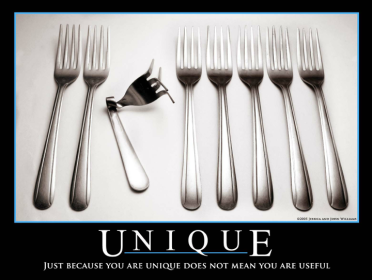
Image via Demotivationals.
Product (books) can contribute to this factor, but differentiation is why I’ve been pushing for writers to have a meaningful and effective social media platform for YEARS. In a world deluged in books? Why you? Why me, for that matter? Social media helps us stand out in a sea of choices. We (readers) gravitate to who/what we know and like.
Brick-and mortar businesses have the benefit of a storefront and location. Maybe Joe’s isn’t the best place for a burger, but it’s next to my work and cheap and I can eat in the 30 minutes I’m allotted for lunch.
But even with the most premium real estate, if a business can’t differentiate and offer quality at a good price, it can still tank.
When I was in NYC in 2012, there was a juice bar across from the Hyatt. PREMIUM real estate, but they didn’t open until after 9:00 a.m. and closed at 4:00 p.m. They had the best (and likely most expensive) location, but they offered nothing different or special that would make regular commuters streaming the streets to and from work deviate from Starbucks. They were missing the people most likely to buy their product—those going to work and home from work.
Not surprisingly, they were out of business when I returned in 2013. Yes, I was bummed.
They had a great product, but, like Sears, they failed to answer the critical questions. WHY YOU? WHY are YOU so special? What do you offer that will make me deviate from a Kmart Jamba Juice?
As authors, we face the same problems. The modern consumer wants to know, Why should I READ instead of playing XBox or watching Duck Dynasty? Isn’t reading WORK? Why your book, when there are a quarter of a million others?
And there are a lot of writers out there paying for fancy marketing and ad campaigns thinking it’s the Golden Ticket. I’m certain that juice store thought the same when it rented premium space in Manhattan. But this is no longer enough. We have to be unique, special, offer value, connect to the consumer and be able to answer the critical questions…
WHY US? WHY OUR BOOKS?
Focus
Business used to be BIG. Big was BETTER. Big business, big papers, big publishing, but big is dead and the remaining few are barely able to sustain their bulk.
Small business makes up most of the commerce. The future is niche. Nintendo is a fabulous example. They didn’t try to take on XBox or PlayStation. They came out with the Wii. Nintendo spotted a huge audience being left out of the gaming experience—those who wanted to play and have fun, but weren’t hardcore gamers.
Unlike XBox, they didn’t seek to be an all-in-one technology device where one could play games on-line with ten buddies in five countries, watch YouTube, browse the web and check in on Facebook. Nintendo focused on simplicity, on the inexperienced gamer (who likely never would play First-Person-Shooter Games).
Grandma could bowl and Grandpa could swing a tennis racket. Toddlers could dance and Nana could dance with them. Whether bowling, wielding a virtual sword, or working out? Wii was SIMPLE….which meant Nintendo didn’t have to compete with the bigger gaming consoles. They could also beat the bigger boys on price and make a profit far sooner by filling an overlooked need with a far less expensive product.
Focus is one of my pet peeves about having multiple pen names, but that’s another blog :D. It’s also why we don’t need to be everywhere all the time on social media. It dilutes the power of focus.
For writers? Look around. Who is a forgotten or overlooked audience? Where can you find a niche audience just waiting for you to see them? To connect with them? I teach how to do this in my book, btw ;).
Beyond social media, what genre boundaries can you break as an artist? Sure, write urban fantasy, but there’s a ton of competition. Why not an urban fantasy with a thirty-something, forty-something or even Baby Boomer heroine? Hey, just because we get older doesn’t mean we’re dead and don’t want to believe we still got it :D.

FORTY’s so bright, I gotta wear shaaaaadddes….. Yes, I am forty.
Trust me when I say I am not interested in a book with a twenty-something protagonist. I want older women to ROCK, and maybe writers can help our society stop looking at getting older like it’s a disease.
For the love of CHOCOLATE, they’re smile lines not psoriasis! What’s with all the CREAMS? I am NOT contagious and you will ALL be here eventually, so why can’t “being older” be HOT?
What are your thoughts? As readers, do you get tired of the same tropes? What is a favorite book or movie and what made it special? Why was it different than all the other choices? Why did it stand out? Do you struggle with focus? Shouldn’t being older be hot? It was for Sean Connery, why not us gals? Oh, and big thighs. Stop stuffing us in Spanx and just let a gal with a booty and curves/cushion be HOT…ok, that just went a weird direction *hangs head*
I love hearing from you!
To prove it and show my love, for the month of December, everyone who leaves a comment I will put your name in a hat. If you comment and link back to my blog on your blog, you get your name in the hat twice. What do you win? The unvarnished truth from yours truly. I will pick a winner once a month and it will be a critique of the first 20 pages of your novel, or your query letter, or your synopsis (5 pages or less).


December 2, 2013
Do You Have “As You Know, Bob…” Syndrome?–How Writers Can Butcher Dialogue & How to Fix It

Original image via Flickr Creative Commons, courtesy of Kevin Krejci…
Writing a stand-out novel involves a lot of individual pieces working together in perfect concert. If there’s no solid plot? Readers get confused, lost or bored. If the plot is great, but the characters are all one-dimensional paper dolls? No one cares. If we butcher grammar, spelling and formatting? It’s a formula for dismal sales or even a long line of one-star reviews from ticked off readers.
Hey, the world may think writing fiction is easy, but we all know differently ;).
One of the best ways to move plot forward with increasing momentum and to create living, breathing characters is by harnessing the power of dialogue. As an editor for twelve years, I can tell you dialogue is one of the single largest components of writing great fiction, and it’s the part that’s most often butchered. The story can be great, the setting, the prose?
….and then comes this clunky dialogue with characters talking in ways only seen on bad soap operas or movies highlighted/slayed by Rotten Tomatoes. I call it Soap Opera Dialogue or Days of Our Lives Dialogue. Why? Because soap operas never end….EVER. The dialogue is written in a way that a viewer can miss the past seven months of the show and still catch up, so there is a lot of coaching in the dialogue.
Good novels aren’t soap operas. Novels actually END.
This type of dialogue can also be called, As You, Know, Bob…Dialogue, which is what we’re going to address. And just so you know, Stephano was NOT killed by the ice cream truck. It was a ruse to fake his own death, and he’s actually partnered with Victor to embezzle funds from the charity, but you won’t find that out for another three years….
Here today to talk about how to write superlative dialogue is one of our outstanding WANA International Instructors, Marcy Kennedy. This gal knows her stuff, but if you want some reassurance, I strongly recommend checking out legendary screenwriter David Mamet’s Letter to the Writers of The Unit. (Caution: Strong Language. But, in fairness, writers who are paid to write for a major television show should have known better, and they tanked a good show with bad writing and deserved the butt-chewing).
Take it away, Marcy!…
***
Dialogue is a great way to convey information, but only if you do it correctly.
In Revision & Self-Editing, James Scott Bell says the key to avoiding info dump dialogue is to remember that dialogue is always from one character to another. It can’t sound like you’re manipulating it (even though you are). It must always be what a character would naturally say.
Let me explain.
Dialogue written for the reader’s benefit feels unnatural because you have characters say things they wouldn’t normally say or say them in a way that they wouldn’t (often using much more detail than any of us include when we talk).
Dialogue written for the characters fits the context, and is always from one character to another rather than from one character to the reader. It takes more work to achieve, but the result will be worth the effort.
Dialogue that’s written “to the reader” is often called “As You Know, Bob…” dialogue.
As the name suggests, “As You Know, Bob…” Syndrome is when one character tells another character something they already know. It’s done purely for the reader’s benefit, and it’s unnatural.
TIP: A character won’t say something the character they’re talking to already knows.
Example: A husband won’t say to his wife, “When we bought this house two years ago, we emptied our savings for a down payment. We don’t have anything left.” The wife already knows when the house was purchased. She knows they emptied their savings. She also knows they haven’t been able to replace those savings yet.
Her husband has no reason to say any of that.
Info-dumps won’t always be this obvious, but if you could add “as you know” to the front of whatever’s being said? Time to re-write.
TIP: If it’s common knowledge, it won’t come up in conversation.
Example: Let’s say you have two sisters meeting to go out for lunch. One shows up at the other’s door.
Susie knocked on the kitchen door and waved to her sister who was mopping away in an apron she never seemed to take off. Her sister glanced up and waved then dropped her mop back in the bucket.
She ran a gloved hand through her messy hair that had fallen out of a ponytail and she let Susie inside. “Come on in. I’m just cleaning up the muddy paw prints left by our pit-bull, Jasper.”
Though the prose is good, it’s common knowledge among the characters that her sister owns a pit-bull named Jasper, which makes an otherwise good piece of writing suddenly clunky. Her sister wouldn’t feel the need to state the name of the dog. That’s soap opera writing.
Susie’s sister would be more likely to say…
“Come in for a sec. Just have to clean up the mud the stupid dog tracked in again.”
Even essential information needs to be given in a natural way. So if knowing that their dog is a pit-bull named Jasper is essential to the story, you could write…
“A flash of fur tore across the freshly washed floor and threw itself at Susie for a petting, and she shoved the dog down. ‘Off, Jasper.’ The muddy pooch dropped onto his back for a belly rub, pink floppy tongue lolling out of his mouth.
Ellen rubbed her tired eyes. ‘Sorry about that, Sis. Did he get you dirty?’”
Susie shook her head and rubbed Jasper’s belly with her foot. A little mud never hurt anyone. ‘Any more trouble with the anti-pit-bull crowd at the park? Rick said someone threatened to call the cops last week.’”
TIP: A character won’t say something that isn’t relevant to the conversation.
“A hundred years ago when the dam was constructed, this town was built on the dried out flood plain. If the dam breaks, it’ll wipe out the whole place.”
Did you catch the sneaky insertion of backstory in adding a hundred years ago? What regular person would actually say that? Who would care how long ago the dam was built when the real issue is whether or not the town is about to be destroyed?
Want to learn more about writing great dialogue?
On Saturday, December 7, I’ll be teaching a 90-minute webinar called Say What? Techniques for Making Your Dialogue Shine. I’ll cover the seven most common mistakes when it comes to dialogue and how to fix them, explain how to ensure your dialogue makes your story stronger, show you how to create dialogue unique to your characters, and answer some of the most frustrating questions about dialogue such as how to handle dialect, should we use contractions in historical novels, science fiction, and fantasy, and is it okay to begin a book with dialogue.
If you can’t make it at the time it’s scheduled but still want to attend, sign up anyway. The webinar will be recorded and sent to all registrants. Click here to register!
NOTE: WANA Mama (moi) has created a special page for classes and specials. Just click the new tab or go HERE.
All registrants also receive an ebook copy of the latest book in my Busy Writer’s Guides Series—How to Write Dialogue.
This class is being offered as part of a WANA 2Fer. Save $20 when you register for both my dialogue class and Lisa Hall-WIlson’s Internal Dialogue class. Register for the Two-Fer HERE.
Do you struggle with “As You Know, Bob…” Syndrome? Are there movies that have driven you nutso with this kind of dialogue?
About Marcy Kennedy:

Marcy Kennedy, WANA Instructor Extraordinaire
Marcy is a suspense and speculative fiction writer who believes fantasy is more real than you think. Alongside her own writing, Marcy works as a freelance editor and teaches classes on craft and social media through WANA International. She’s also the author of the Busy Writer’s Guides series of books, including Strong Female Characters and How to Write Faster. You can find her blogging about writing and about the place where real life meets science fiction, fantasy, and myth on her web site.


November 29, 2013
While You Were Sleeping—The Difference Between Narration & Internal Dialogue
From the movie “While You Were Sleeping”
Yes, even WANA International is offering a Black Friday special. Cool thing is? No leaving home or getting in a fist-fight…unless you want to. I’ve killed three people this morning (though as writers. it’s ALL legal). I’ve asked Lisa Hall-Wilson to come chat with you guys about a serious sticky-wicket for new writers especially. We need to know what is going on in the minds of characters, but if they go around talking to themselves non-stop? Readers just roll their eyes.
There is a BIG difference between narrative and internal dialogue, and Lisa is here to clear up the confusion!
Take it away!
*throws glitter*
Stephen King wrote in On Writing about the writer’s toolbox. Tools like vocabulary, punctuation, grammar, showing not telling – those all belong in the top level of your toolbox, but lift off that top shelf and there’s a bunch of other tools that are very necessary but relegated to the more advanced writer.
Internal dialogue is a tool in the bottom half of your toolbox.
Internal dialogue is the thoughts, dreams, stream-of-consciousness stuff inside a character’s mind only the reader is privy to. Most people talk to themselves, think in at least partial sentences, talk themselves into and out of all kinds of things, they weigh consequences, wrestle with past experiences all in their head in a split second. How many smart girls make bad decisions about men?
Without internal dialogue, understanding what the character is struggling with – how they arrive at their decisions – what motivates them, it’s very difficult for a reader to connect emotionally. Internal dialogue happens through all points of view – first person, third person, omniscient.
There are a lot of aspects to writing internal dialogue correctly that go beyond punctuation (which is what I get asked about the most – should I use italics or quotation marks?).
One of my favorite movies is While You Were Sleeping. This came out in 1995 so I’m using spoilers. If you haven’t seen it I’m calling Scrooge – too bad. Go watch it on Youtube. Seriously awesome movie.
Lucy is this slightly neurotic (aren’t we all) but loveable single lady who finds herself facing another Christmas alone. Her parents are gone, she has no family or siblings – and she’s asked to work Christmas AGAIN because she’s the only one without family.
This is the story’s main story arc. Lucy wants a family, to belong somewhere, more than anything else. We have to understand this internal conflict for the rest of movie’s antics to make sense. To understand why she makes the decisions she does – and what she sacrifices for that dream.
“Ever fallen in love with somebody you’ve never even talked to? Ever been so alone you spend the night confusing a man in a coma?”
We feel her pain. Who doesn’t know the pain of being alone? Being alone at Christmas is a double whammy – who can’t sympathize with Lucy? But she’s funny. Her self-deprecating humor doesn’t make her a tragic character – who wants to follow a story about a Debbie Downer?
This movie uses a lot of internal dialogue really well. The conflict of the movie kicks off when she saves a man from being squished and severed by an oncoming subway train. (A man she’s secretly fantasized about for a while.) She bungles yet another opportunity to start a conversation with the guy she’s been fantasizing about and after he’s walked away she says, “Nice coat. Merry Christmas to you, too. You’re beautiful. Will you marry me? I love you.”
She follows the ambulance to the hospital to make sure he’s OK. They won’t let her in to see him because – she’s not FAMILY. She’s standing on her own in the ER and says out loud to herself, “I was gonna marry him.” She’s trying to get her Christmas tree into her second-floor apartment through the window.
“Forty-five dollars for a Christmas tree and they don’t deliver? You order $10 worth of chow mein from Mr. Wong’s and they bring it to your door. Should’ve gotten the blue spruce – they’re lighter.”
Internal dialogue is not the same as narration though, and the two are often confused. Lucy does a fair bit of narration as well, so this is a good movie to watch to learn the difference. The movie opens with a Lucy-voiceover:
“OK. There are two things I remember about my childhood. I just don’t remember it being this orange. First, I remember being with my dad. He would get these far off looks in his eye and he would say, ‘Life doesn’t always turn out the way you plan.’
I just wish I’d realized at the time that he was talking about my life. But that never stopped us from taking our adventures together. He would pack up our sometimes working car and tell me amazing stories about strange and exotic lands as we headed off to exciting destinations like… Milwaukee – it’s amazing how exotic Wisconsin…isn’t.’”
You can watch the opening few minutes of the movie here:
This is narration. Lucy is talking directly to viewers not herself. What she’s talking about, revealing, she intends for others to hear. It would be like giving someone your diary to read, but sitting next to them and offering narrative context between each entry. Note the difference?
Take an hour and a half this season and watch the movie. Pick out all the places where Lucy talks to herself (because that’s how internal dialogue has to work in the movies). What do you learn about Lucy and her personal desires, the reasons she makes her decisions, why she doesn’t speak up. Does knowing what she’s thinking to herself make you root for her, feel her pain, cheer with her success, agree with the lies she tells?
I’m teaching a webinar on Beyond Basics: How to Write Effective Internal Dialogue on December 7 at 11AM ET. We’ll cover punctuation, the psychology of internal dialogue, tense dilemmas, and lots of other things, and I’ll have examples from best-selling novels to show you how it’s done.
This class is being offered as part of a WANA2fer. Save $20 when you register for my Internal Dialogue class and Marcy Kennedy’s How To Make Your Dialogue Shine on the same day at 2PM ET. Because it’s Black Friday, today only if you sign up for the Internal Dialogue class you can save 25% by using the code ‘lisasentme’ at registration.

Lisa Hall-Wilson
About Lisa Hall-Wilson:
Lisa Hall-Wilson is an award-winning freelance writer, author, and journalist published across Canada. She specializes in social media administration, interviews, profiles, and social justice initiatives, and speaks at writer’s conferences. She’s passionate about making this world a better place one get-off-your-butt-and-do-something article at a time. She blogs Through The Fire at http://www.lisahallwilson.com and writes dark fantasy novels. She hangs out on Facebook A LOT.


November 27, 2013
Life’s Unseen Blessings—Are We Really Thankful?
Pippa claims she is “helping” with laundry *head desk*
I make it a point to begin every day with an attitude of gratitude. I think it is important, especially these days where it seems like every commercial tells us we aren’t thin enough, rich enough, successful enough, happy enough. We always need more “stuff” to be enough.
I wrote a blog ages ago about focusing on success, that we tend to drift where the eyes focus. Race car drivers learn that if you want to cross the finish line, never ever take your eyes off the goal line. Look at the wall and you will hit the wall. I believe everything is that way. If we focus on where we are lacking, we run the danger of being ungrateful for what we have, and that can be an extraordinarily defeating way to live.
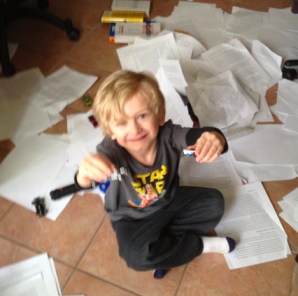
The Spawn is “helping” me edit….
Lately, I’ve had a hard reality to face. I’m so busy potty training the toddler and teaching him and correcting him, but have I taken enough time to ENJOY him? There are the dishes, the laundry, the dusting, but am I ENJOYING the home I have? I love serving writers, blogging, teaching, but am I taking a moment to ENJOY all of you? I have the world’s best husband. I make it a point that, when he gets home from work, a fresh, hot meal is made and his clean pajamas and towel are laid out next to the shower, but am I ENJOYING him?
Am I truly giving thanks?
I don’t know about you, but I know this is an area I can ALWAYS come up higher. Grateful people are happy people.
Thanksgiving seems to be the middle child of holidays. Halloween is fun and glitzy and exciting. Christmas is cute and we adore it and look forward to seeing it…and oh yeah, there’s Thanksgiving. Hey, do we even have decorations for that? Christmas is this magical time, and we often hear how we need to keep Christmas in our hearts all year long. Well, that is a great idea, but we would be wise to keep Thanksgiving there too.
We have all kinds of ways to be thankful and many things to be grateful for that we might not even notice. The next time you go to complain, I challenge you to think of the blessing that inconvenience really is. I do this myself when I hear complaints and grumblings coming out of my mouth. I’ll show you what I mean…
I am thankful for all the laundry I have to do, because it means I have clothes to wear.
I am thankful for the dishes that need washing, because it means I didn’t go hungry.
I am thankful for the big electric bill, because it means my home has lights and heat.
I am thankful for the sheets that need to be changed, because it means I own a bed.
I am thankful for all the reading I have to do, because it means I’m literate.
I am thankful for the car that needs all new tires because it means I don’t have to walk miles and miles to get what I need.
I am thankful for that parking space waaaaayyyy out in the back, because it means I don’t have to park in a handicapped space. I can walk.
I am thankful for the garage that needs to be cleaned out, because it means I am blessed with plenty.
I am thankful for the chores to be done, because it means I have family who love me enough to travel to see me.
I am thankful for the litter-box that needs cleaning and the dog blankets that need washing because it means I have pets who love me unconditionally.
I am thankful for the split ends I have, because it means I haven’t lost all my hair to chemo.
I am thankful for the Christmas cards I need to send, because they could as easily be funeral announcements.
I am thankful for the traffic snarls that catch me, because the body the firemen pulled out of the fatality accident could have been me.
I am thankful for the gutters I need to clean, because it means that I have a home.
I am thankful for all the Christmas shopping I have to do, because it means I’m not alone.
I am thankful for my less than perfect thighs. It means I didn’t lose my legs in a car accident or to diabetes or an IED.
I am thankful that I sometimes have doubts and confusion about my future and my purpose when I think of the lives cut short before they ever had a future.
I’m thankful for the government I like to gripe about, because I don’t fear going to prison or being shot if I disagree with my country’s leadership.
I am thankful for my freedom and the amazing men and women who put their lives on the line to protect it.
I am definitely thankful for all of you who bless me on this blog by giving me your time. Time is the most precious commodity we have and we never seem to have enough, but all of you are so generous to me. You share the very thing we all need more of….TIME. Thus, I’m immensely grateful you guys give to freely to me. I’m WAY thankful for my amazing WANA community. You guys are the bright spot to each and every day in my world and the world around you. It is such an honor and privilege to serve you.
What are you guys thankful for? I’d like to hear your comments (which I am super especially thankful to get, by the way).
I love hearing from you!
To prove it and show my love, for the month of November, everyone who leaves a comment I will put your name in a hat. If you comment and link back to my blog on your blog, you get your name in the hat twice. What do you win? The unvarnished truth from yours truly. I will pick a winner once a month and it will be a critique of the first 20 pages of your novel, or your query letter, or your synopsis (5 pages or less).
Also, for all your author brand and social media needs, I hope you will check out my new best-selling book Rise of the Machines—Human Authors in a Digital World.
Make sure you check out all the awesome WANA International Classes. You take care of your family, why not yourself? Sneak away. We won’t tell. And Dollar Store Bags make AWESOME wrapping and they will all get better gifts once your book is a best-seller, right?
Yes, I am an enabler. But we are more fun  .
.



